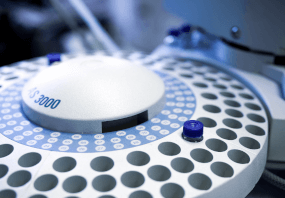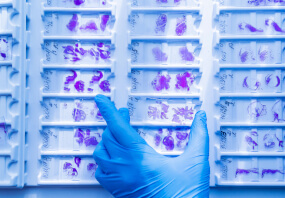General description
DnaJ homolog subfamily C member 13 (UniProt O75165; also known as Required for receptor-mediated endocytosis 8, RME-8) is encoded by the DNAJC13 (also known as KIAA0678, PARK21, RME8) gene (Gene ID 23317) in human. Originally identified as a C. elegans protein involved in mediating endocytosis, , receptor-mediated endocytosis 8 (RME-8) is a member of the DNAJ family of proteins implicated in regulating protein folding through associated chaperones. RME-8 is shown to interact with Hsc70/HSP-1 and sorting nexin 1 (SNX-1), loss of RME-8, SNX-1 or Hsc70 affects retrograde trafficking at the early endosomes-TGN interface. In addition, RME-8 is demonstrated to coordinate the function of the WASH complex and the retromer SNX dimer. The pentameric WASH complex is comprised of WASH1, strumpellin, SWIP (strumpellin- and wash-interacting protein), FAM21, and CCDC53. RME-8 N-terminal J region (a.a. 1-453) involved in membrane association is found to be involved in establishing interaction with the first third of FAM21 tail domain. WASH complex is responsible for the generation of branched actin networks on endosomes and the creation of microdomains into which specific cargoes can be concentrated. Loss of RME-8 function results in a profound endosomal tubulation, more extensive than the endosomal tubulation phenotype resulted from loss of the WASH complex.
Specificity
This rabbit polyclonal antibody detected shRNA-mediated cellular RME-8 knockwon by immunoblotting and fluorescent immunocytochemistry (Freeman, C.L., et al. (2014). J. Cell Sci. 127(Pt 9):2053-2070; Girard, M., and McPherson, P.S. (2008). FEBS Lett. 582(6):961-966; Girard, M., et al. J. Biol. Chem. 280(48):40135-40143).
Immunogen
Epitope: C-terminus
KLH-conjugated linear peptide corresponding to the C-terminal end sequence of human RME-8.
Application
Anti-RME-8, Cat. No. ABN1657, is a highly specific rabbit polyclonal antibody that targets RME-8 and has been tested in Immunocytochemistry and Western Blotting.
Immunocytochemistry Analysis: A 1:200 dilution from a representative lot detected shRNA-mediated RME-8 downregulation in COS-7 cells (Courtesy of Peter McPherson, Ph.D., FRSC, and Martine Girard, PhD, McGill University, Canada).
Western Blotting Analysis: A representative lot detected RME-8 associated with the 20,000 xg pelleted insoluble fraction from the HEPES buffer homogenates of human skin fibroblast MCH46, breast epithelial MCF10A, and embryonic kidney HEK293T cells (BT-474, HeLa, SK-BR-3) cells (Ioannou, M.S., et al. (2016). J. Biol. Chem. In press).
Western Blotting Analysis: A 1:1,000 dilution from a representative lot detected shRNA-mediated RME-8 downregulation in HEK293T cells (Courtesy of Peter McPherson, Ph.D., FRSC, and Martine Girard, PhD, McGill University, Canada).
Immunocytochemistry Analysis: A representative deteced a reduced RME-8 immunoreactivity in HeLa cells transfected with shRNA targeting either RME-8 or Spastin (Freeman, C.L., et al. (2014). J. Cell Sci. 127(Pt 9):2053-2070).
Immunocytochemistry Analysis: A representative lot detected puntate endosomal RME-8 immunoreactivity by fluorescent immunocytochemistry staining of 2% paraformaldehyde-fixed, 0.2% Triton X-100-permeabilized COS-7 cells. LIttle RME-8 immunoreactivity was seen associated with TGN, lysosome, or plasma membrane, RME-8 shRNA transfection greately abolished cellular immunostaining (Girard, M., et al. (2005). J. Biol. Chem. 280(48):40135-40143).
Western Blotting Analysis: A representative lot detected the presence of RME-8 in WASH complex immunoprecipitated from HeLa cells (BT-474, HeLa, SK-BR-3) cells (Freeman, C.L., et al. (2014). J. Cell Sci. 127(Pt 9):2053-2070).
Western Blotting Analysis: Representative lots detected a greatly reduced ~200 kDa target band in lysates from RME-8 shRNA-transfected monkey (COS-7) and human (BT-474, HeLa, SK-BR-3) cells (Freeman, C.L., et al. (2014). J. Cell Sci. 127(Pt 9):2053-2070; Girard, M., and McPherson, P.S. (2008). FEBS Lett. 582(6):961-966; Girard, M., et al. (2005). J. Biol. Chem. 280(48):40135-40143).
Western Blotting Analysis: A representative lot detected the ~200 kDa RME-8 target band in postnuclear extracts from multiple rat tissues as well as from human, monkey, mouse, and rat cell lines. RME-8 was found enriched in rat kidney tissue-derived subcellular fractions representing microsomes and clathrin-coated vesicles (CCVs), but not cytosol or plasma membrane (Girard, M., et al. (2005). J. Biol. Chem. 280(48):40135-40143).
Research Category
Neuroscience
Quality
Evaluated by Western Blotting in NIH/3T3 cell lysate.
Western Blotting Analysis: A 1:500 dilution of this antibody detected RME-8 in 10 µg of NIH/3T3 cell lysate.
Target description
~220 kDa observed. 254.4 kDa calculated. Uncharacterized bands may be observed in some lysate(s).
Physical form
Affinity purified.
Purified rabbit polyclonal antibody in buffer containing PBS with 0.05% sodium azide and 50% glycerol.
Storage and Stability
Stable for 1 year at -20°C from date of receipt.
Note: Variability in freezer temperatures below -20°C may cause glycerol containing solutions to become frozen during storage.
Other Notes
Concentration: Please refer to lot specific datasheet.
Disclaimer
Unless otherwise stated in our catalog or other company documentation accompanying the product(s), our products are intended for research use only and are not to be used for any other purpose, which includes but is not limited to, unauthorized commercial uses, in vitro diagnostic uses, ex vivo or in vivo therapeutic uses or any type of consumption or application to humans or animals.
biological source: rabbit. Quality Level: 100. antibody form: affinity isolated antibody. antibody product type: primary antibodies. clone: polyclonal. purified by: affinity chromatography. species reactivity: human, monkey, rat, mouse. technique(s): immunocytochemistry: suitable, western blot: suitable. NCBI accession no.: NP_056083. UniProt accession no.: O75165. shipped in: ambient. target post-translational modification: unmodified. Gene Information: human ... DNAJC13(23317). Storage Class Code: 10 - Combustible liquids. WGK: WGK 2.- UPC:
- 51172704
- Condition:
- New
- Availability:
- 3-5 Days
- Weight:
- 1.00 Ounces
- HazmatClass:
- No
- MPN:
- ABN1657












